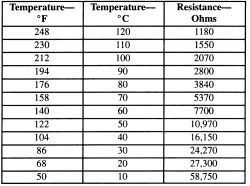Let me first say that I'm an electricity noob. So I've never really heard of this kind of thing happening. I've only heard of things being below the minimum voltage.
The vehicle is a bone stock 1994 Mustang GT. I am having some trouble with the car running rough. It runs rough and cuts out and lacks power when you're driving it. So to get to the point, I scanned the codes and it came up with two codes. One said "Mass air flow sensor below minimum voltage". Ok. I've dealt with that before, and I know that you check the wiring over, but it usually means a dead sensor. But the next code, I'm afraid I don't really understand. It said "Intake air temperature sensor above maximum voltage". Hmm. So how does that work out? Somehow the sensor is getting more voltage then it needs, according to the code. So I can assume what... that the sensor is still good, but that I need to... look for... I don't know. I don't know how to go about dealing with that one. I was hoping someone here could tell me what to do about it.
The vehicle is a bone stock 1994 Mustang GT. I am having some trouble with the car running rough. It runs rough and cuts out and lacks power when you're driving it. So to get to the point, I scanned the codes and it came up with two codes. One said "Mass air flow sensor below minimum voltage". Ok. I've dealt with that before, and I know that you check the wiring over, but it usually means a dead sensor. But the next code, I'm afraid I don't really understand. It said "Intake air temperature sensor above maximum voltage". Hmm. So how does that work out? Somehow the sensor is getting more voltage then it needs, according to the code. So I can assume what... that the sensor is still good, but that I need to... look for... I don't know. I don't know how to go about dealing with that one. I was hoping someone here could tell me what to do about it.



Comment